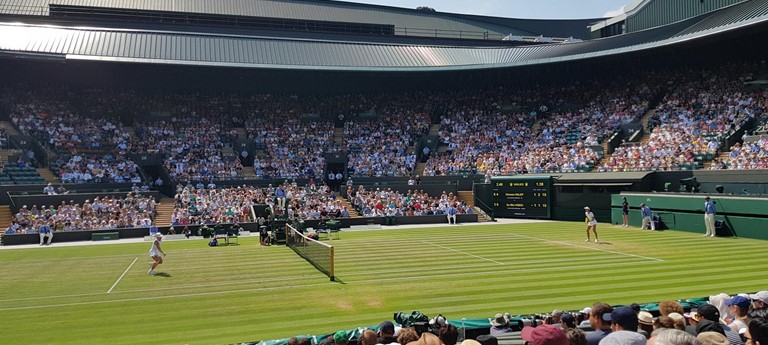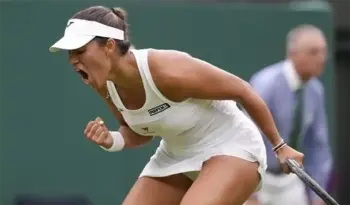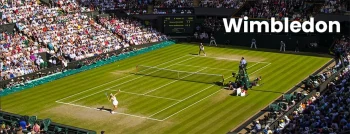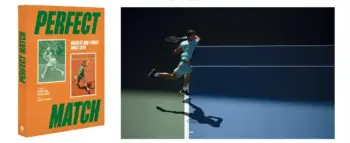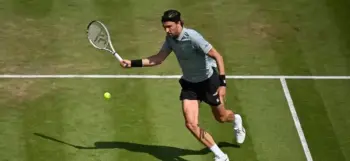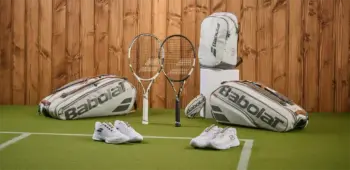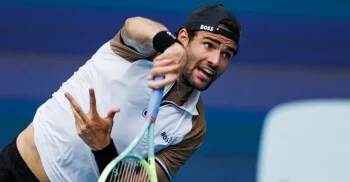Since the much awaited grass season is finally here, I had to write this. I recently visited the birthplace of modern tennis – London, England, United Kingdom. Wimbledon, an affluent suburb in south-west London, is home to the All England Lawn Tennis and Croquet Club (AELTC), which hosts the oldest and arguably the greatest tennis tournament in the world – ‘The Championships, Wimbledon’.
A brief history of tennis…
However, the origins of tennis can be traced back to as far as ancient Mediterranean civilizations and then to 12th century France, when the French monks popularized different versions of the game, including a French handball game called jeu de paume (‘game of the palm/hand’). In the 16th century, rackets came into use and the game began to be called tennis, derived from the French term ‘tenez’, which translates to ‘take this’ or ‘be ready’ which was used as a call from the server to his opponent.
It was only in 1874 in England, when Major Walter Clopton Wingfield published the first rule book and took out a patent on a game he called Sphairistiké or Lawn Tennis, what we now know as tennis. He modified the indoor medieval game to an outdoor court game and designed the rubber all. He marketed the equipment of his game and saw the popularity of lawn tennis spread throughout the world. Below is a picture I took during my recent visit to the Wimbledon Museum at the AELTC, which shows some of the equipment designed and manufactured by Wingfield during that time.
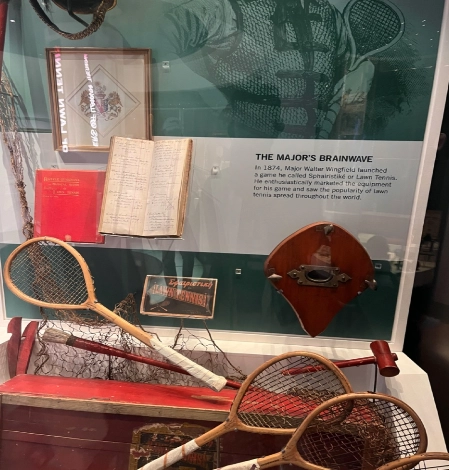
Wingfield’s original court design was in the shape of an hourglass and the net was about 50 cm higher than the one today. The first lawn tennis tournament was played in Birmingham, England in 1874 and in the following years the rules of tennis evolved. It was in July 1877 when AELTC (then known as the All England Club), organised the first Wimbledon Championship on its croquet lawns which was won by Wimbledon- born Spencer Gore. Fun fact – Spencer preferred cricket and had predicted that tennis would not catch on. How wrong was he!
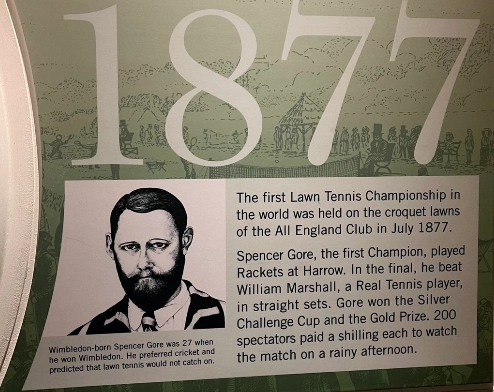
At that time itself, the All England Club decided on a rectangular court with the 15-30- 40 scoring system. Though there were some more modifications to the rules in the following years in cooperation with the Marylebone Cricket Club (MCC), including the height of the net and posts and the distance of the service line from the net, most of Wingfield’s original rules have remained a part of modern day’s tennis.
Wimbledon, The Championships
Given how tennis began (known as lawn tennis), grass has always been regarded as the traditional playing surface for the game. The Wimbledon Championships is the only Grand Slam played on grass today. Until 1974, all slams were played on grass barring the French Open. The US Open switched to clay in 1975 for three years, eventually moving to hard courts from 1978 onwards. The Australian Open moved to hard courts from 1988 onwards.
Wimbledon is widely regarded as the cathedral of tennis. The primary reasons being that the tournament is entrenched in tradition and carries a unique elegance and charm.
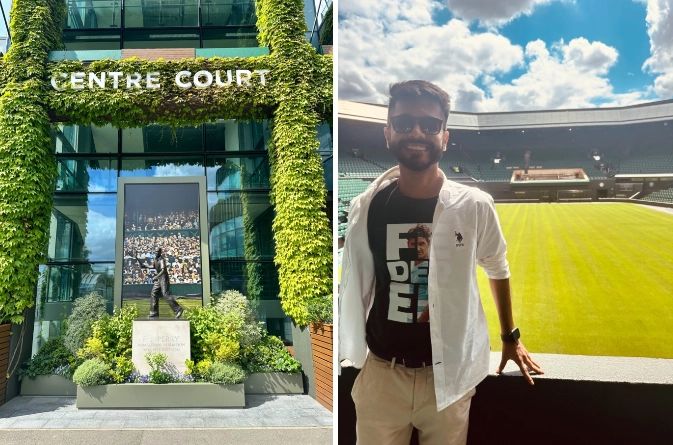
Played on the lush green grass, Wimbledon has a strict dress-code with all players mandated to sport an almost* all-white attire. A single trim of colour along the sleeves, caps, shorts, skirts, tracksuits, bandanas, wristbands, socks etc. should not be more than 10 mm wide and the shoes must be almost entirely white.
Members from the British Royal family attend the Wimbledon event every year from the Royal Box on Centre Court, along with other past champions and dignitaries. No advertisements or sponsor names are allowed on the billboards apart from the small signs of IBM near the service speed indicator, Rolex on the time-clock and Slazenger on the umpire’s chair. Also, these companies have maintained long-standing relationships with the tournament, with Slazenger being the official ball sponsor since 1902! Wimbledon is still regarded as one of the most, if not the most, prestigious tournaments on the tennis calendar. If there is one tournament that has been nearly every tennis player’s (including the big 3 – Roger Federer, Novak Djokovic and Rafael Nadal) childhood dream to win – it’s Wimbledon.
*Fun fact – Any undergarments that either are or can be visible during play (including due to perspiration) must also be completely white except for a single trim of colour no wider than one centimetre (10mm), except female players who are allowed to wear solid, mid/dark-coloured undershorts provided they are no longer than their shorts or skirt. Source: Wimbledon.com
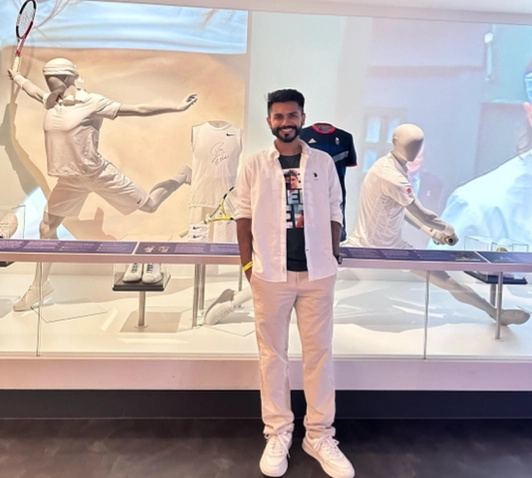
a) On the left: Wimbledon 2008 final kits worn by Roger Federer and Rafael Nadal
b) In the middle behind me: Olympics 2012 gold medal winning kit at Wimbledon worn by Andy Murray
c) On the right: Kit worn by Novak Djokovic in Wimbledon 2014
Success on Grass – What does it take?
Grass is the fastest surface in tennis and hence, speed and power are highly rewarded. The surface is relatively slippery and the ball bounces low and zips off the surface. One needs more variety on the surface, like using the slice and drop shots effectively on the fast surface to change the pace of the ball. Players with good footwork and the ability to stay light on their feet do well on the lush green lawns.
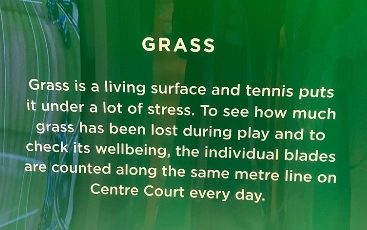
Due to the quick surface, the rallies are shorter and the serve plays a crucial role. Big servers have tasted great success in the past, with Wimbledon recording the maximum number of aces compared to other Grand Slams year after year. But this was also supplemented by the serve & volley (S&V), which had been highly effective in the past few decades, demonstrated by the fact that almost all great champions at Wimbledon till the early 2000s were the best serve and volleyers the game has ever seen. These include Bjorn Borg (who adapted well), John McEnroe, Martina Navratilova, Boris Becker, Stefan Edberg, Pete Sampras, Roger Federer. You’d probably witness more S&V during the Wimbledon fortnight than during the whole tennis season combined. Players would rush to the net after their first serve (or even the second serve) and skilfully angle away the return before the bounce with their deft touch.
While some would find this brand of tennis beautiful to watch, to some it lacked drama. Since the early 2000s, the courts on all surfaces have been made visibly slower and baseliners have taken over, leading to much longer rallies. This started in 2001, when Wimbledon replaced a mix of 70% ryegrass and 30% creeping red fescue with 100% ryegrass. It made the lawns more durable and provided cleaner and higher bounces and slowed down the game.
Enhanced string technology, wider sweet spots on the racket and better player fitness and conditioning levels have allowed modern players to defend better from the baseline than before. Grinding from the baseline is the new brand of tennis, even on grass. Unless the volley is well directed with precision, it is much easier to hit a passing shot.
Is the Serve & Volley becoming extinct? And is it still effective?
We all know that Roger Federer is one of the greatest S&V players in the game. He won his epic battle against the mighty Pete Sampras in Wimbledon 2001 serving and volleying a whopping 107 times in the match (winning 73% of them). However, later on in his career, most of his Wimbledon triumphs came from the baseline, with S&V being used as a tactic rather than as a norm. In 2012, Federer served and volleyed for a total of 62 times (win% – 73%) in the whole tournament and in 2017 only 82 times (win% – 83%). He had to adapt his game constantly against the baseliners.
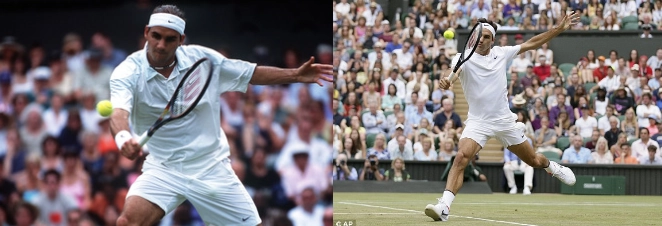
Moreover, Novak Djokovic’s 7 Wimbledon titles and Rafael Nadal’s 2 (making it to 5 finals in a row) is a testament to how baseliners have tipped the scales in their favour compared to the dominant S&V era of the 80s-90s.
Now you might think that the S&V must not be effective enough. But hang on. The data given below suggests otherwise.

While the average % of times S&V being used throughout the Wimbledon tournament has kept on declining year-on-year (10% in 2017 compared to 68% in 1997), the win% on this strategy has remained nearly the same at an average of 69% for the period 1997-2017! Read that again. The average S&V win% has consistently outperformed the average baseline win% for men which is only 46% for the period 2002-2017.
And it is not just the S&V, approaching the net itself has continued to pay dividends throughout the 15 years from 2002-2017. Let’s compare the data for baseline, net approach and S&V.
Wimbledon 2002-2017 Win Percentages: Men Baseline / Approach / Serve & Volley
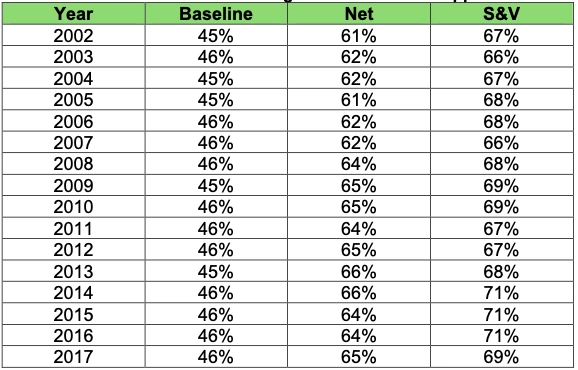

As shown, the net approach itself has averaged much higher in terms of average win% over the years. Though with the relatively slower courts, it has become more demanding to execute the volley or to approach the net with confidence, the effectiveness has not fizzled away. It’s just that less number of players practice the S&V and net play, as the probability of the opponent defending from the baseline as gone up. For one, for the S&V you need to have a big serve or at least find the spots regularly and then back it up with a controlled touch at the net, else you’d get passed easily. And with so many great baseliners coming up, it is natural that the coaching community is fixated on the back of the court than the front of the court.
Statistics show that aggressive tennis is still rewarded on grass. ‘First strike tennis’, which is the serve and the serve+1 (the shot right after the serve) is a major indicator of success, especially on grass.
The rallies in a tennis match can be divided into 3 categories according to length: 0-4 shots, 5-9 shots and 9+ shots. As the tennis strategy analyst Craig O’Shannessy has proven through statistical analysis, that on an average, ~70% of the points in a tennis match are the 0-4 shot length ones, i.e. the short points, while ~20% are of 5-8 shots and ~10% are of 9+ shots. These first four shots are the serve, serve+1, return and return+1 groundstrokes and are normally the ones the get practiced the least, but matter the most for winning tennis matches. And more than 90% of the time the player winning more number short points wins the match.
And what better surface to take advantage of that than on the fastest surface there is – grass!
